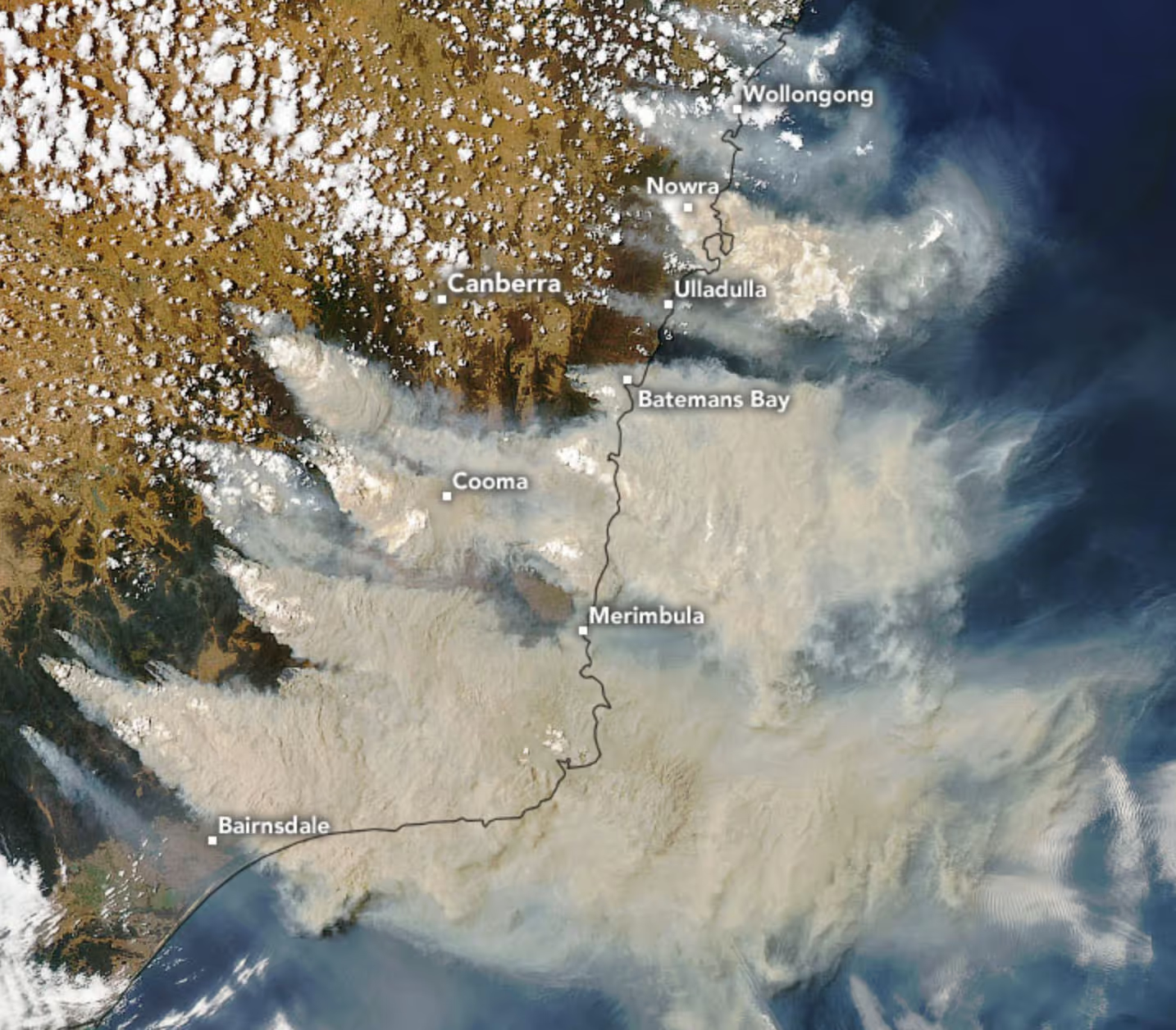

Australia is no stranger to bushfires, which were recorded for more than a century with various levels of severity. The fires in the summer of 2019-2020 were especially harsh and damaging, burning more than 180,000 square kilometers of forest and grassland. In this study, Amperon collaborated with the Australian Energy Market Operator (AEMO) to examine the effect smoke plumes from bushfires had on electricity production of large scale photovoltaic solar farms in New South Wales (NSW), Victoria (VIC), the Australian Capital Territory (ACT) and South Australia (SA).
We used technical specifications and electricity production data of 20 solar farms, several sources for solar radiation and intensity of smoke, and ran counterfactual simulations to assess solar generation. We found that during December 2019 and January 2020, a mean decrease in generation of 4.1% per plant (ACT: 10.3%, NSW: 4.1%, VIC: 3.5%, SA: 1.2%) could be attributed to smoke plumes. The biggest impact of smoke on electricity generation was found for Mugga Lane Solar Park near Canberra (ACT), for which during December 2019 and January 2020 a decrease in generation of 12.0% could be attributed to smoke.
Our work in Australia provides a baseline for understanding the impact of smoke on solar-generation capability at industrial, residential and micro-grid scale and for creating long-term and dynamic forecasting capabilities that can rapidly integrate the converging influences of smoke, wind and cloud cover. These models will be critical for capital and capacity planning within Australia and across other global fire-prone grid regions, like CAISO in California.
The Amperon data science team is actively researching how we can fully integrate this study within our operational forecasts and add smoke effects as a real-time forecast variable for future fire seasons.

.svg)
.svg)
.svg)
.svg)
